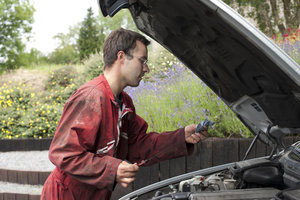Spring Car Care Tips
 Mar 18, 2015
Mar 18, 2015
 With the cold, harsh winter now behind us it’s time to turn our attention to spring. With warm weather comes spring cleaning, but it’s not just your house that needs attention, your car can also go for some tender love and care. After your vehicle has worked extra hard to get you from point A to point B all throughout the winter months, it’s time to reward it with some regular maintenance. Below are some tips to help make sure your vehicle is not only appreciated but keeps running long into the future.
With the cold, harsh winter now behind us it’s time to turn our attention to spring. With warm weather comes spring cleaning, but it’s not just your house that needs attention, your car can also go for some tender love and care. After your vehicle has worked extra hard to get you from point A to point B all throughout the winter months, it’s time to reward it with some regular maintenance. Below are some tips to help make sure your vehicle is not only appreciated but keeps running long into the future. Fluid Levels - Inspect your engine’s fluids to ensure they are full. Make sure things like coolant, brake fluid, power steering fluid,transmission fluid and engine oil are at their recommended levels. If you do not know where these are located check your owner’s manual.
Check Your Battery – Your battery can be drained quickly if you live in a location with exceptionally harsh winters. When the freeze starts to melt and the warm weather is on the horizon make sure your battery is reliable. Just because it’s warm now, doesn't mean there isn't residual damage from the cold. If your battery is a few years old and your car takes a few seconds to start, have your battery inspected at your local shop.
Inspect Your Wheel Alignment – After a winter of spinning on ice and hitting pothole after pothole it’s important to make sure your wheels are aligned. If you feel your car pulling to one side or another have your alignment adjusted. It’s a relatively cheap and quick procedure and it will prevent larger issues from forming like prematurely worn out tires.
Look For Rust – Check the exterior of your vehicle for rust. With road salt constantly being used over the winter it’s easy for it to cling onto your car and form rust. If you find rust treat it immediately! If you don't have any rust, now would still be a good time to run your car through a carwash.
Check Wipers And Lighting – Snow and ice can wear down your windshield wiper’s lifespan. Check and test your wipers to make sure they are still working effectively. If they are faulty switch them out as soon as possible. Same goes for lighting, make sure all exterior (and interior) lights are working. Turn on your headlights, flash your high-beams and make sure your brake and back-up lights are working properly. It’s important to not only see, but be seen as well.








